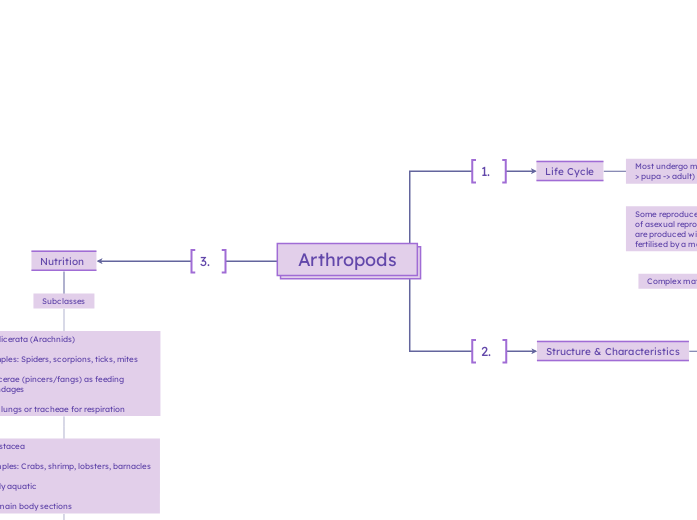Arthropods
Nutrition
Subclasses
1. Chelicerata (Arachnids)
-Examples: Spiders, scorpions, ticks, mites
-Chelicerae (pincers/fangs) as feeding appendages
-Book lungs or tracheae for respiration
2. Crustacea
-Examples: Crabs, shrimp, lobsters, barnacles
-Mostly aquatic
-Two main body sections
3. Hexapoda (Insects)
-Examples: Ants, butterflies, beetles
-Three body parts: head, thorax, abdomen
-Six legs, often winged
-Most successful and widespread group
Structure & Characteristics
-Segmented body with jointed appendages (legs, antennae, mouthparts)
Bilateral symmetry
Compound eyes and other sensory organs
Exoskeleton made out of chitin
Life Cycle
Most undergo metamorphosis (egg -> larva -> pupa -> adult)
Some reproduce parthenogenetically (a form of asexual reproduction whereby offspring are produced without the embryo being fertilised by a male).
Complex mating rituals in some groups









